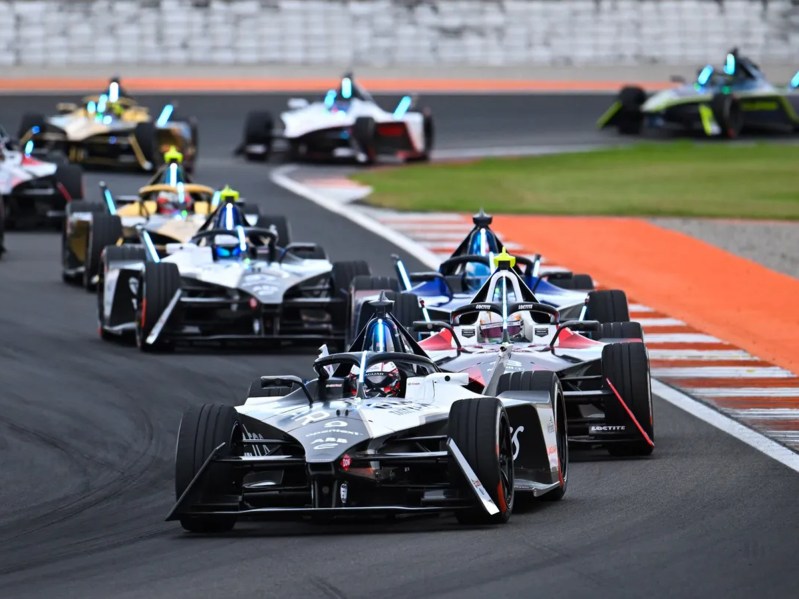
The FIA recently selected Bridgestone as the exclusive tire supplier for Formula E racing for the next four seasons. If you’re unfamiliar with the Formula E motorsports competition, imagine F1 racing with all-electric drivetrains. Bridgestone will supply tires for all Formula E teams for four seasons, starting with the 2026-2027 season.
The FIA launched Formula E racing in 2014 to demonstrate the potential of sustainable mobility with net-zero racecars in international competition. In 2019, the FIA elevated Formula E to World Championship status, beginning with the 2020-2021 racing season.

The ABB FIA Formula E World Championship series has 11 teams of two drivers, each competing with a 16-race calendar on racetracks and street circuits in cities worldwide. Season 10 kicks off on Saturday, January 13, 2024, in Mexico City.
Formula E drivers and teams compete for World Championship titles with a point system similar to Formula 1. Drivers win points based on their finishing position in races, and teams score the points earned by the team’s two drivers.

Formula E tire regulations
Like F1, Formula E is governed by racing rules and regulations that are updated annually. A single tire supplier provides the tires for all teams. Teams cannot modify the tires or use any treatments such as solvents or softeners on the tires. Teams are not allowed to heat or cool the tires while mounted on the racecar or stored in the garage storage area.
The tire supplier provides each racecar with four new rear and four new front all-weather tires for each competition except for double-header races, for which the supplier provides six new rear tires and six new front tires. All tires have unique identification on the sidewall and must be identical. The tires are returned to the supplier after the competition. The tires can only be filled with untreated air and within the minimum and maximum pressure range specified by the tire supplier.
Because each Formula E racecar must use the identical FIA-specified chassis and battery, tire treatments or modifications could theoretically give a racecar an unfair advantage by not conforming to the FIA rules. Therefore, only the supplied tires are allowed in the racecar garage, and they must always be visible within the allocated storage area. FIA observers called scrutineers are on hand to observe tire changes and tire storage to ensure that the teams follow all applicable rules and regulations.

Bridgestone’s sustainable tire technology for Formula E
Formula E requires that tire suppliers provide teams with a single-specification tire for all track and weather conditions. Unlike F1, where teams can select from a collection of dry-weather tires with soft, medium, and hard compounds, Formula E teams use a single spec. In addition to meeting the challenges of racing-level performance, the tires must meet demanding sustainability criteria. For example, the ION race tires for Formula E racing from the current supplier, Hankook, are made from 28% sustainable materials.
Bridgestone, currently celebrating the company’s 60th anniversary in motorsports, “aims to evolve sustainable global premium motorsports products,” CEO Shu Ishibashi stated in a corporate news release announcing Bridgestone’s selection to supply tires for Formula E starting with the 2026 to 2027 season. According to Ishibashi, Bridgestone will focus on advancing the technology of the Enliten tire line for Formula E.




